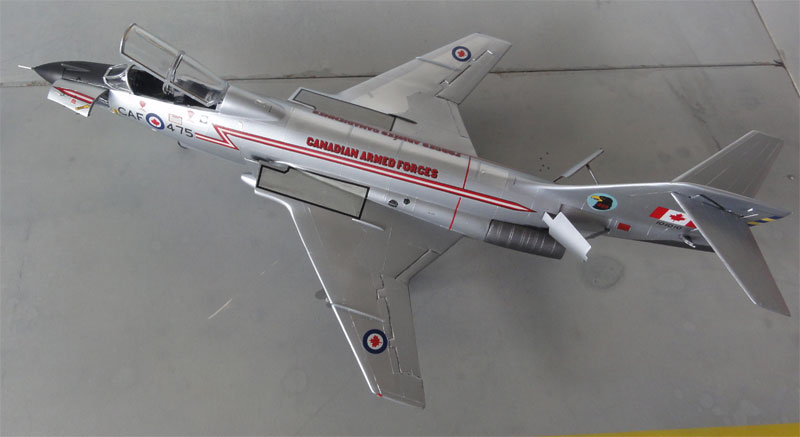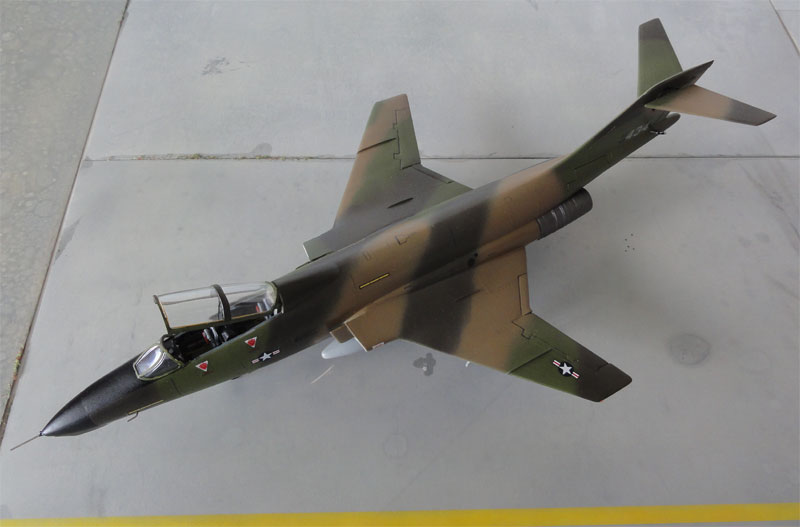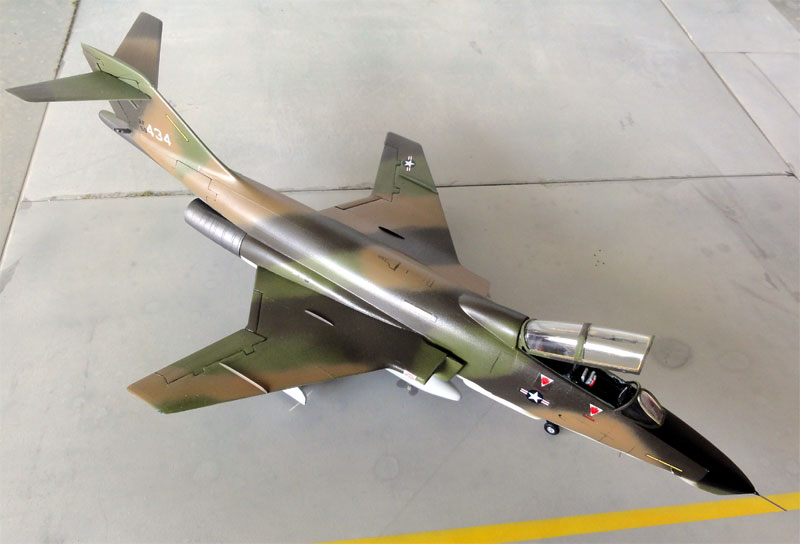[ page 1 ]
1/72 scale kits of the McDonnel F-101 Voodoo
page 1
page 2
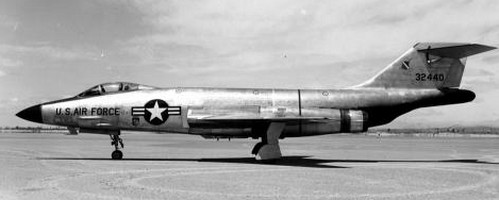
The first F-101A Voodoo was delivered on May 1957 to the USAF. It could fly Mach 1.5 and had a long range of about 4500 km. The MA-7 fire-control radar was fitted but bombs could be dropped. It had four 20mm M39 cannons, but often one cannon was often removed in service. About 77 F-101As were built. Twenty-nine planes F-101A’s were modified to RF-101G with a new camera nose with the radar and canons removed.
The RF-101A reconnaissance version was based on the F-101A but had six cameras in a reshaped nose. Delivery started in 1957. Eight RF-101As were delivered to Taiwan. (of these, China shot down two planes during illegal overland flights).
The F-101C was an improved –A with extra fuel. Delivery started in 1957 with 47 built. Later, 32 planes were modified to a unarmed reconnaissance version, called RF-101H. The U.S. Air National Guard used them until 1972.
Also, the version
RF-101C
was
developed, with again six camera’s and additional strength build in. Service
entry was in 1958. It could also be used for bombing and was deployed to
Vietnam in 1967. It could fly at high speeds. About 166 planes were built
and after the Vietnam war the type also served with the USAF until 1979.
When it was
seen that the need was not really there for bomber escort, the type was
fitted for the interceptor mission with a large two seat tandem cockpit
and
other systems. The initial version was the F-101B interceptor that
became available in 1959. Missile armament was seen as required with another
crew member to lead interception and the canons were removed. Four Falcon
missiles could be carried, either infrared guided (AIM-4B) or radar guided
(AIM-4A). It could also be equipped with nuclear tipped Genie missiles
to destroy whole Soviet bomber formations. Systems were a very powerful
MG-13 radar and communication systems for the SAGE concept where long range
ground radar operators guided the aircraft towards its target. More powerful
J57-P55 engines with longer afterburners were fitted enable it to fly up
to MACH 1.8.
From 1961 to 1966, the F-101B fleet an InfraRed tracking SysTem (IRST) sensor was fitted in front of the cockpit. The in-flight refuelling system was removed. Almost 540 F-101B’s were manufactured until 1961 with 56 planes delivered to Canada and the remainder to the USAF Air Defense Command starting in 1959.
Some F-101B were used for dual training, as TF-101B, later renamed F-101F. Almost 230 aircraft were used for training including some modified F-101B’s. Canada got ten training planes, called CF-101D.
A single CF-101B was used in Canada as training radar target, called EF-101B.
The F-101B interceptor
used only above the North American Continent for interception in the overall
US NORAD command chain during the Cold War. Aircraft were later also used
by the ANG until 1982.
Several 1/72 kits of the F-101 Voodoo were issued by particularly Revell, Hasegawa and Matchbox. (in 2011, Hobbymaster issued a RF-101B kit). Aftermarket sets are available, like for the seats those of Pavla, Aeroclub and True Details. And off course many decalsheets.
This kit (kit no. PK-411) was issued in 1980 as a F-101B Voodoo two seater version. A nose part is included to make a RF-101B as well. The kit is rather basic and nowadays the Revell/Monogram F-101B kit is much better.

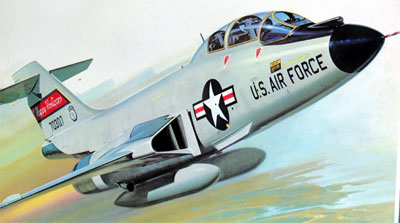 ..
..
The plastic parts are in three colours as was usual with older Matchbox kits. There is almost no panel detail and overall details are scarce.

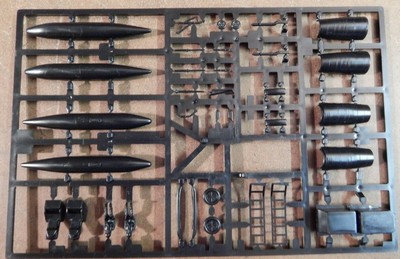

Some work can be done with scratch add-ons.
Decals are simple but for:
- Grey F-101B Happy Hooligans of the 178 FIS, North Dakota ANG
- Natural metal F-101B 409 Squadron , Canada
- Camouflaged RF-101B from the 192 TRS, Nevada ANG
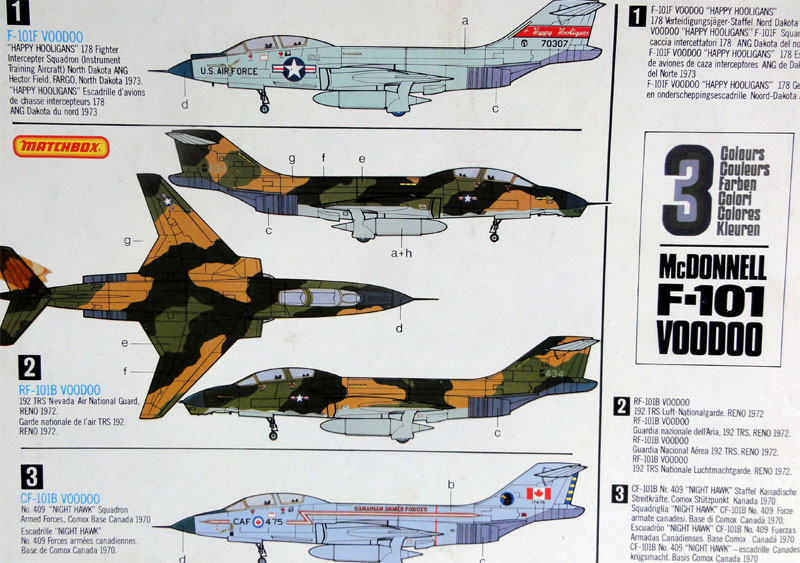
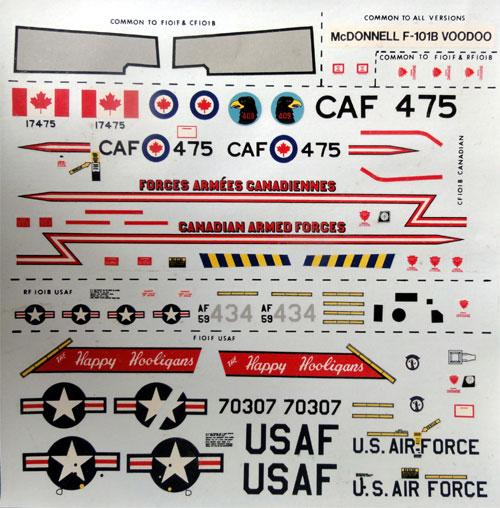
Two of these older kits were found
in the collection of Marcel, a good modelling friend of mine, and it was decided
to complete these models:
(1) a natural metal finish CF-101B
of Canada
of the "Night Hawks"
(2) a camouflaged RF-101B USAF
The model is basic. For the CF-101B model it was decided
to add some extra detail. An avionics bay was set
open. The nose bay side was cut out and a new hatch made from thin plastic
card set open. Details were added from scratch. The Infra Red Seaker IRST
fairing on the nose needs a bit filling.

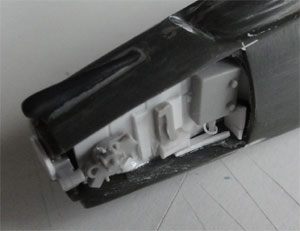
For the camouflaged USAF RF-101B recon
Voodoo, the kit nose part #12 was used. A camera window was cut out and
the gap filled after painting with transparant Micro
Kristal Kleer.
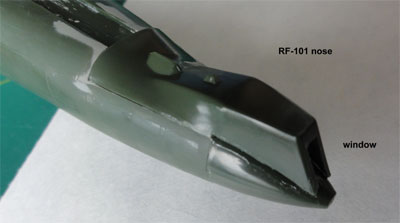 ..
..
The rest of the kit assembly is easy
but sanding and filling is required.

Both model cockpit got some extra
details from bits and pieces. The base interior got painted about FS36375
grey. The kit seats are very basic and a joke. They need replacement and
new seats came from True Details set 45003. Seat head rests were painted red, basic seat grey with straps added made from tape. Instrument
decals came from the spare decal box.
 ..
..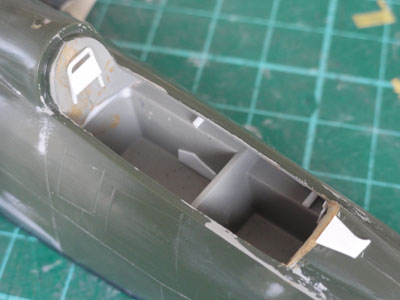

The aileron gaps on this kit are
a bit wide, so these were filled and re-inscribed. Also some other panellines
were inscribed with an Olfa P-cutter.
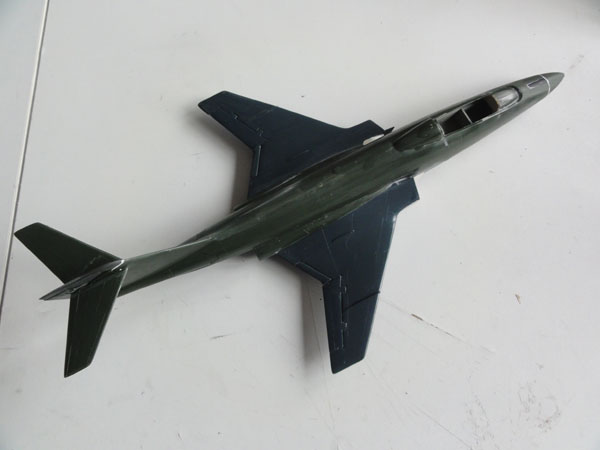
The two engine afterburner pipes have a bad seam. I cut off the base plate so they can be turned 90 degrees and set on the models. This will hide the seam viewing from the side.
The nose gear bay could be made a
bit deeper. The main gear wells were boxed in with plastic card and white
glue.
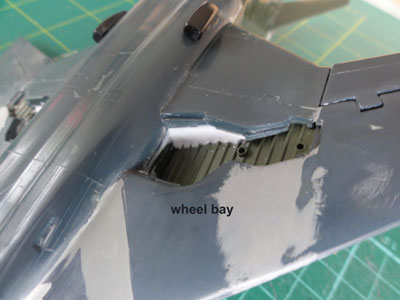
All kits got a grey base coat. Corrections
with putty and sanding were made as needed. Next, the colour schemes were
airbrushed with the Harder
Steinbeck airbrush :
When the CF-101 first batch of jets was introduced in Canada these had a natural metal finish 51781 C with the lower forward fuselage painted in aluminium lacquer 515-101 according to the 502-1-Gp-12c Canadian paint system.
From 1970 the CF-101 second batch got an overall paint of aluminium lacquer 515-101. For the Canadian F-101B of the aerobatic team "Night Hawks" in the scheme 1970 it was assumed it had this aluminium lacquer cote. This was achieved airbrushing plain Revell Aqua color Silver "90" as a base coat.
The afterburners were sprayed separately
in a darker colour.

The markings are for 409 squadron
"Night Hawks" Canadian Voodoo with bi-lingual titles "Canadian Armed Forces / Forces
Armees Canadiennes ". The titles and their styles varied somewhat during
the years. In the Revell kit they read only "Canada", so variations are
possible when making more kits. The fuselage roundels were now 20 inch.
FS36622 lower surfaces: H311
FS34102 green: H303
FS30219 brown: H310
I used for FS3079 Tamiya XF51 khaki drab.
A piece of carton board was used while airbrushing free hand to prevent too much overspray.
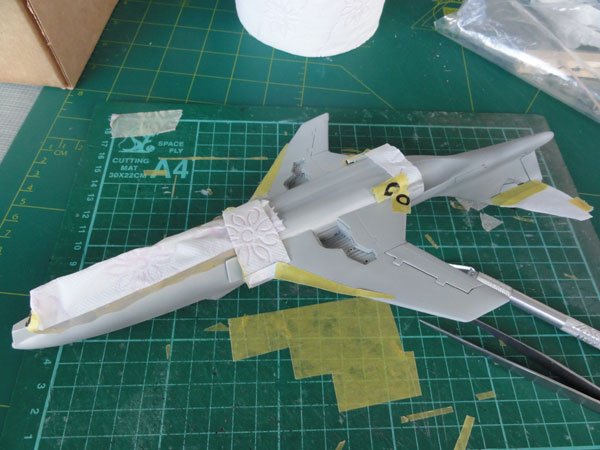
The rear of the fuselage was masked and a metallic paint airbrushed on. The afterburners were sprayed separately in a darker colour. Do not forget to spray any fuel tanks, gear doors etc in the process.
The models got a gloss coat of Johnson Future/Pledge for better decal adhision using this method...
Time for decalling. On each model,
a mix of kit decals will be used but also stencilling from MicroScale
/ SuperScale set no. 72-304, a mixed ANG aircraft set, were
used. (I did not use the nice F-101 "Texans" squadron decals here).

Decalling in progress....

Next came weathering, limited on the models with some wash in the inscribed panels and on the landing gear. A protective clear coat was finally applied of Johnson Future/Pledge. The camouflaged Voodoo got a coat of Johnson Future/Pledge as well but this was made “semi matt” with a few drops of TAMIYA acrylic Flat Base X21 mixed in.
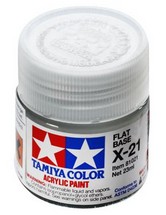

The rest of the assembly with the gears and tanks. The anti-collision lights were painted with small notches cut out and filled with Kristal Kleer. Small pitot tubes were made from a metal rod and set on the nose.
The canopies frames got very thin yellow decal striping. Inside the canopy, a cross bar was made. The canopies were set open using a pice of rod. On the CF-101B the rear air brakes were also set open.
That completed after many years these two old Matchbox models.
CANADA CF-101B of 409 squadron "Night Hawks"

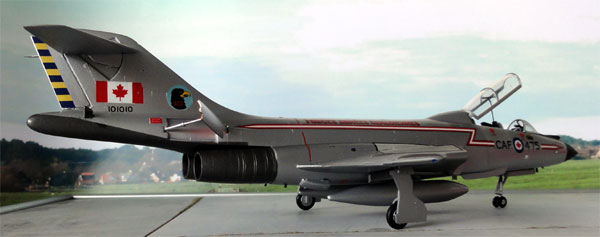

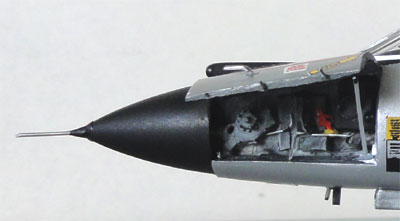 .........
.........
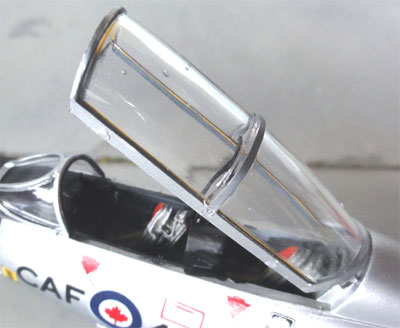 ...
...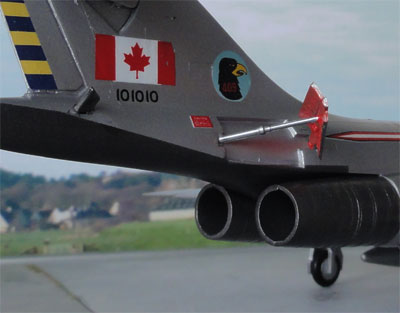

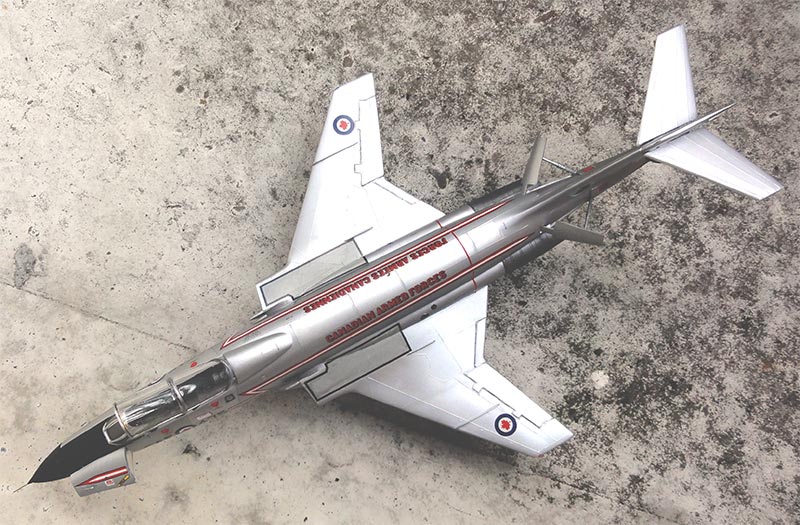
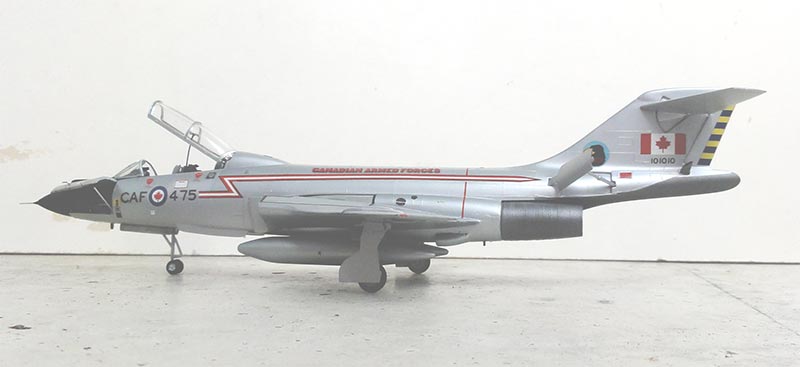

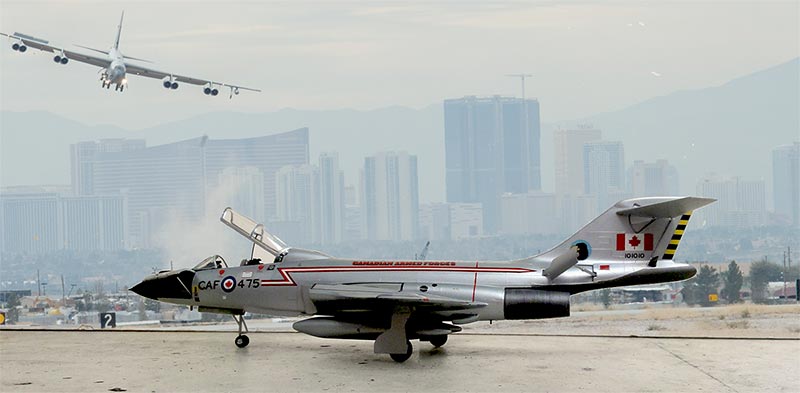
during a visit at Las Vegas USA
![]()
USAF RF-101B
of 192 TRS Nevada ANG

Note the low visibility lights
also on this aircraft
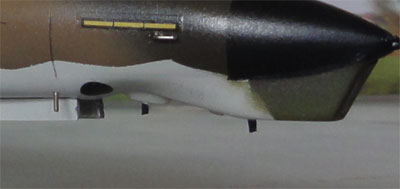 ..
..
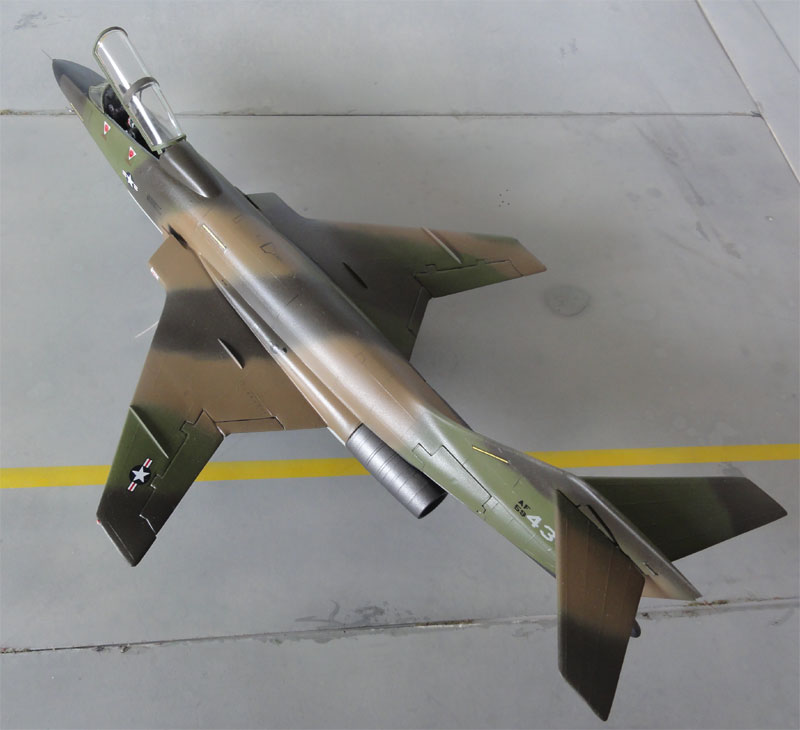
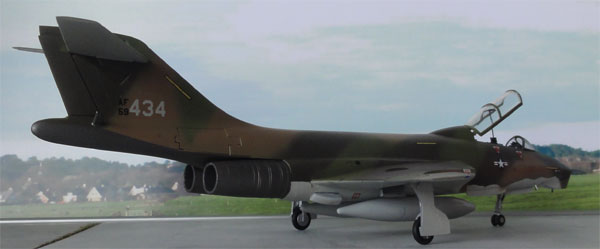 ..
.. .
. 


On to F-101 Voodoo page 2...... (with the older models...)
Back to 1/72 Models.......
References:
- Air international, Volume 29. pages 77-80
- F-101 Detail & Scale, Volume 21, Bert Kinzey
- F-101 Voodoo - Modern Military Aircraft series (5002), Squadron Signal :
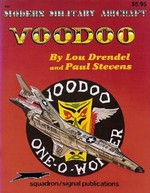
- Wings of fame , Volume 1,
pages 166-187, Aerospace publishing, UK, 1995
- The Century Series: The USAF
Quest for Air Supremacy,1950-1960, Schiffer publications
- McDonnell F-101 Voodoo (Osprey
Air Combat), Robert Dorr

(c) Copyright Meindert "designer"/ All rights reserved. Your comments are welcomed by webmaster
Created this page
July 15, 2012
